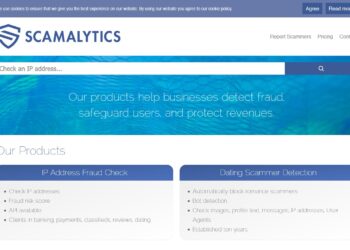Attackers inherently have undeniable advantages over defenders. After all, it is generally easier to destroy than to build. It takes a lot of time, effort, and resources to create protections against various attacks, but it only takes a few weaknesses in these defenses for assailants to exploit and penetrate.
“Cyberattackers have the advantage because the attackers need to exploit a single vulnerability whereas the defender has the much costlier task of mitigating all vulnerabilities,” explains Donnie Wendt of the Cybersecurity and Information Systems Information Analysis Center. Wendt adds that attackers also have the edge of being able to choose and focus their efforts on a specific time and site of the attack. Defenders have to spread out their resources to defend all attack surfaces.
The introduction of advanced cybersecurity solutions, however, has changed this inequitable reality. Now, there are ways for organizations to be more resilient against increasingly persistent and vilely creative cyberattacks.
Extended Security Posture Management
One of the best upgrades to current cybersecurity solutions is extended security posture management or XSPM. This cybersecurity technology addresses new threats that are not covered by the range of the capabilities of its predecessor.
Depending on the platform provider, extended security posture provides a host of features and functions aimed at making an organization’s security posture significantly more dependable. XSPM may include advanced analytics tools, intuitive control dashboards, security insights, automation, and extensive integration to ensure the widest business security validation possible. Essentially, these additions aim to enable comprehensive end-to-end security validation.
Some cybersecurity platform providers, however, prefer to associate their XSPM with well-known highly effective security validation techniques, namely breach and attack simulation (BAS), continuous automated red teaming (CART), and advanced purple teaming. These two encompass almost all the advancements tied with XSPM. They expand security visibility, unify and consolidate security management, and leverage automation and integration.
Notably, extended security posture management creates advantages for organizations that are defending their cyber infrastructure and assets. These benefits help level the battlefield between cybersecurity teams and threat actors.
1. Significantly reducing the resource requirements of continuous security testing
Continuous security testing has become a must because of the ceaseless attempts of threat actors to breach cyber defenses. They continuously attack and exploit whatever opportunity they can find. The logical response to this is to similarly undertake continuous testing to ensure that all security controls are always working as they are intended, to prevent any opportunity for hackers to successfully exploit vulnerabilities and introduce malware or steal sensitive information.
Continuous security testing is not cheap and easy, though. Undertaken traditionally, continuous testing entails overwhelming costs, time, and manpower. This is particularly extremely difficult to achieve as the world is still reeling from a cybersecurity workforce shortage. The National Institute of Standards and Technology (NIST) estimates that there is a shortage of around 2.72 million cybersecurity professionals worldwide.
Extended security posture management employs automation and some degree of artificial intelligence to enable sensible automation in security testing, enabling continuous tests with considerably lower labor, time, and resource requirements.
It is also worth pointing out that XSPM does not settle with run-of-the-mill or automation-by-name types of automation. It is designed to undertake genuine automatic processes based on proven systems and security frameworks.
2. Addressing threats with emphasis on adversarial perspectives
Think like the enemy. Cliché as it may sound, this advice continues to make perfect sense in the context of modern cyber threats. It is easy to miss the most important details on how to beat your assailant when you fixate on what you are supposed to do as a defender.
Extended security posture management makes use of multiple tools and solutions that emphasize adversarial perspectives. Red teaming, for one, is based on the idea of employing a group of white hats to attack an organization to spot security weaknesses. Purple teaming is about incorporating an adversarial mindset in the establishment of defenses. Both of these strategies are enhanced or advanced under XSPM to uncover security flaws that could have been overlooked sans continuous red teaming and the reliance on basic purple teaming practices.
Moreover, extended security posture management takes advantage of freely available cybersecurity frameworks, MITRE ATT&CK in particular, to be up-to-date with the latest information about adversarial tactics and techniques. MITRE ATT&CK offers a comprehensive and detailed guide on the most recent cyberattacks to help organizations in detecting, identifying, and preventing them.
Does the perspective of an attacker really help solidify cybersecurity solutions and provide organizations an edge? There may be no stats to quantify the benefits of red and purple teaming, but it is clear that most major cybersecurity providers have already adopted them. The leading cybersecurity platform providers would not be building solutions that include tools and strategies built around adversarial perspectives if they demonstrate no real benefit.
3. Greater efficiency
No cybersecurity solution would ever eliminate the advantage of attackers in being able to focus their efforts on specific attack points. Defenders will always have to holistically strengthen their cyber defenses to anticipate attacks from all fronts. XSPM, nevertheless, makes the process of establishing, maintaining, and improving defenses significantly more efficient.
Instead of requiring multitudes of cybersecurity professionals to build or install security controls, conduct security tests, fix issues, and improve systems in response to the latest threat intelligence, organizations can run automated processes based on systems and AI-driven programs that actually work.
Additionally, cybersecurity teams can integrate various security controls to consolidate the data they generate and seamlessly bring them together under a single dashboard or user interface. This means a big boost in efficiency that allows cybersecurity teams to keep up with the increasing risks and attacks.
Understandably, this does not change the fact that cybersecurity teams have to deal with an entire world of threat actors. They do not have the luxury of being able to only deal with hackers and cybercriminals from a specific country or region. Their organization can be attacked by threat actors from different parts of the world. However, the greater efficiency they get from automation, consolidation, and security controls integration is enough to have adequate time to prepare and update security controls, fix flaws as they are spotted, and learn from the latest threat intelligence and insights.
Cyberattackers, just like rain and taxes, are a constant in modern life. However, the advantages they have enjoyed over the decades do not have to exist forever. It can be countered with the right technologies and strategies. There are ways to turn the tables against attackers. One of the best ways is to adopt extended security posture management.






